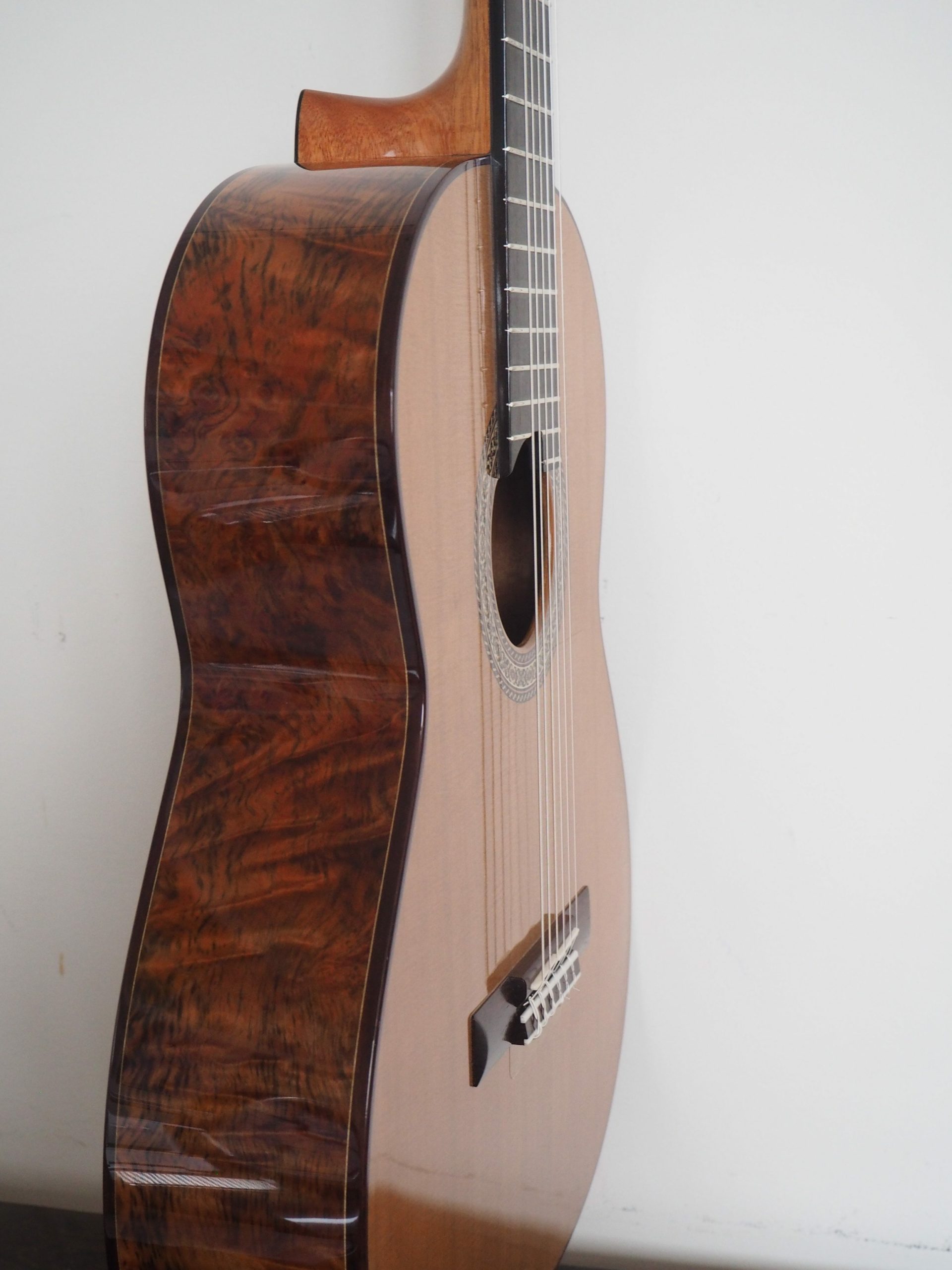

The hand planes that are made and sold by Lie-Nielsen and Lee Valley are exceptional tools that are ready to use right out of the box. I don't say that anymore, unless you are willing to spend the time and effort to restore these tools and if you don't want to do all that work, I suggest buying new tools, especially hand planes. In my previous post on a basic tool kit, I suggested looking for vintage tools at local tool swaps, flea markets and antique stores. It is simple, goes together quickly and I have been using that same bench for the last twenty years! If you want to, build yourself a Roubo bench, or a Nicholson English bench, which I think is the best bench ever designed or make a Shaker style bench. I recommend making a work bench similar to the one in Underhill's, The Woodwright's Apprentice.
#AMERICAN CLASSICAL GUITAR LUTHIERS HOW TO#
There is a plethora of information on the Internet about how to build a work bench, so much so it's a little mind boggling! It seems that many wood workers would rather make work benches than anything else. The very first thing to do is BUILD YOURSELF A DECENT WORK BENCH! Build something basic and sturdy with a flat top! I think it is easier to build a guitar than to build a Federal highboy. You will do some inlay with the rosette and rout out a few rabbets for the purfling and binding, but there are no complicated joints, unless you join the neck to the body with a sliding dovetail or make a "V" joint to join headstock to neck shaft. Yes, there is the "V" joint to join headstock to neck shaft which requires much more patience and experience. The dovetail joints used to join a drawer together are far more complicated than any joint you will use in making a guitar.Ī modern classical guitar is made up of butt joints and one scarf joint. Underhill? You will learn valuable wood working techniques if you make any of his projects. These books by Roy Underhill are still recommended reading: There are many such courses available today that weren't available when I started this journey thirty years ago. You can skip buying a book and find a guitar making course here in the United States or aboard. Guitar Making: Tradition and Technology, by William Cumpiano and Jonathan Natelson I still recommend purchasing or borrowing one of the following books on guitar construction, but choose only one! Pick one book and make a guitar using that book and that book only! Using more that one book at a time will do nothing but confuse you! I speak from experience! Once you complete your first guitar then purchase other books. Here are some of the changes and my current recommendations for someone who wants to make their first guitar. I was looking at a blog post of mine from eight years ago, Basic Hand Tool Kit for Making a Classical Guitar, Revised and saw that I have made a few changes in my tool kit. Here is a short video of Gwenyth and my latest guitar! Enjoy! It is always a delight to hear Gwenyth play! She played on this guitar for nearly two hours and said, " I congratulate the guitarist who wins this! It is an amazing guitar!" It has a wonderful voice, it is loud with wonderful projection with incredibly clear treble strings, and is very even across all strings! This guitar will continue to improve and grow as it is played! I posted another video of Gwenyth on social media and got a wonderful response from Laura Husbands (adjunct faculty of Guitar at the Lamont School of Music, University of Denver), she said, "What a beautiful guitar!" My young friend, Gwenyth, who is currently studying classical guitar with Manuel Barrueco at the Peabody Institute, was kind enough to stop by my study and try out this guitar while it was still "in the white". I just started French polishing the guitar with blonde shellac and expect to have it completed by mid October. This guitar's top is salvaged old growth redwood, the back and sides are East Indian rosewood that was milled in Milan, Italy twenty years ago, the neck is Honduran mahogany with a Macassar ebony fretboard, its string/scale length is 648mm/25.5inches, it sports Waverly Sloane tuning machines, the bindings are double thick ebony and the bridge is East Indian rosewood.

Again, I am donating to the Foundation a high end handcrafted classical guitar which will be presented to the winner of their 2021 Classical Guitar competition. Those of you who follow my blog may know that I am a sponsor of the Twisted Spruce Music Foundation Symposium and Competition, this symposium brings together composers and young guitarists to create new repertoire for the classical guitar.


 0 kommentar(er)
0 kommentar(er)
